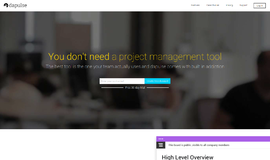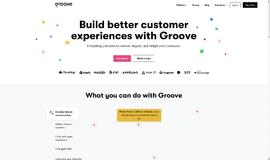Freelancing Mini-Series – An Expert's Guide to Pitching Your Story to a Big Publication
Hardworking freelancers don’t just earn a living, they’re also constantly honing their skills and looking for the best opportunities to improve their craft.
Thus far, our mini-series has touched on the following aspects of the freelancer’s pursuit to “craft perfection:”
1) Consistently finding great clients
2) Simple ways to pinpoint the exact value of the projects you’re working on
Now let’s take a look at how you can get the attention of big name publishers and get your stories published.
Pitching may (at times) seem a little nagging. And nobody wants to be a nag.
Worse still, it’s safe to assume that any website you’re interested in pitching has received a similar pitch at least 1,268 times that month. How can you make your story stand out?
Here’s a 5-part guide to ensuring your pitch doesn’t go unnoticed.
1. Do your research on the website and/or person you’re pitching
Who are you pitching to? No, really, who are you pitching to? Here are some questions you should ask yourself:
- Do you know the website and are you familiar with its writing style?
- Have you read the submission guidelines to check for unusual requirements?
- Do you know who the editor or person responsible for considering you is?
- Do you know who they really are, including their interests, pet hates and favorite websites?
- Do you know where their social media hangouts are and have you connected with, or followed them on those services?
If you know the answer to all of these questions, you can check this first step off the list.
Oh, and it doesn’t hurt to tweet the occasional cool thing to their Twitter feeds just to lay down a little initial groundwork and get your name in front of their eyes with some positive association.
2. Have a freakin’ awesome story
Keyword: story. Without a great story, a pitch is nothing. A comedian can have the best delivery in the world, but if their jokes suck, they’ll still flop. Okay sure, you’re excited about getting published on this big site, but you know what they’re excited about? Freakin’ awesome stories.
That means, if the story you’re considering pitching is not freakin’ awesome, you must take the time to find a story that is. Only once you’ve found a genuinely interesting story or a particularly unique angle on an ongoing narrative should you contact them.
3. Have plenty of examples in your arsenal
Whether your previous writing examples are in the form of a personal blog (which is ideal) or in the form of a portfolio on some kind of freelance journalism writing website is entirely up to you. The important thing is that you have some ready.
When you contact the website with your freakin’ awesome story and successfully grab their attention because it’s so utterly irresistible, the first thing they’ll do is see if you can genuinely write about it.
That’s why you must ensure your portfolio is ready; to prove to them that you can come up with the goods and do justice to your great idea. Include only your best writing examples and take the time to proofread, polish and improve them before submitting your pitch.
4. Write a killer email to whoever handles the submissions
Next, it’s time to make contact, and the opening line is paramount. Let’s look at three quick examples of how not to open your contact email.
- Hey! I want to get published on your blog!
- Hey! I have been writing for over seven years and I’ve written this!
- Hey! I have lots of experience in this subject and I want to write this!
You’ll notice that all three of these begin by talking about you and start with the word “I”. The problem is, the person reading your email is not interested in you; they’re interested in them. It’s the age-old sales question: “what’s in it for me?”
Instead, you must start off by building rapport before continuing to answer the question of what’s in it for them. Here are three good example openers.
- Hey, your blog is one of my favorite, I love your recent editorial on [X] subject
- Hey, looks like you guys are having a great month, I saw you were mentioned on CNN
- Hey, hope everything is well in [website HQ location], I visited the area last week and loved it.
You’ll notice that none of these start off with the word “I”. They’re designed to show the person reading the email that you have some kind of common ground with a friendly, short, snappy rapport-building sentence.
Only after this is done do you pitch to them. Break the boring ol’ work email mould, show you’re a human being and be friendly.
It’s important not to lie here. If you visited the city, say so, but don’t say you’ve visited if you didn’t. Find some way to relate, use that as your opening gambit.
By opening your email this way, you’re considerably more likely to get the rest of it read.
5. Delivering your pitch
Okay, let’s have a quick recap. So far you have:
- Done your research on who you’re contacting
- Made initial contact via social media if relevant and possible
- Found a freakin’ awesome story or a freakin’ awesome angle on an existing story
- Got a killer portfolio to prove you can come up with the goods
- Crafted an interesting and rapport-building email opener
Now, after all of this is done, finally you’re ready to submit your pitch. And that means you must explain the reason why your pitch is such a great idea… in terms of their interests.
Your interests are getting published on the website. But the truth is, nobody cares about that. You must have designed your story to be inherently of interest and value to the readership of your target website. Explain in your pitch why and how it’s inherently of interest to them, (and by extension, their readership).
For example, sentence structures might look something like this:
- I think your readers would love this article because of the recent events that happened in X,Y and Z. It’s very relevant right now.
- To get some authority on this article, I’ve already made enquiries about a media quote with X, Y and Z organizations. They’re keen to chime in.
- After [X] article you published a few months ago performed so well in the social shares, I think it would be a great follow-up, retrospective or other editorial to build on that article’s success
It’s approaches like these, ladies and gentlemen, that get the attention of the people controlling the editorial calendars on your target website.
You don’t want to say “I want to publish this article because I have this experience and I want to get published on your site”.
You figure out how to help them with their goals and then talk in terms of their interests.
Preparation
When it comes to getting your work published on major websites, it’s all in the preparation. If you invest more time on producing something truly spectacular for a target website, not only are you more likely to get it published there, you’re more likely to get published on other similarly huge websites in the same sector later on.
For a freelance writer, getting published on sites like these can do wonders for your career, help justify higher rates later on and help you really make a name for yourself as a writer.
If you keep those things in mind, follow this checklist and make sure you do a great job with the article, it will pay serious dividends in the development of your career.
Happy pitching.
Recent Stories
Top DiscoverCloud Experts

Compare Products
Select up to three two products to compare by clicking on the compare icon () of each product.
{{compareToolModel.Error}}

















{{CommentsModel.TotalCount}} Comments
Your Comment